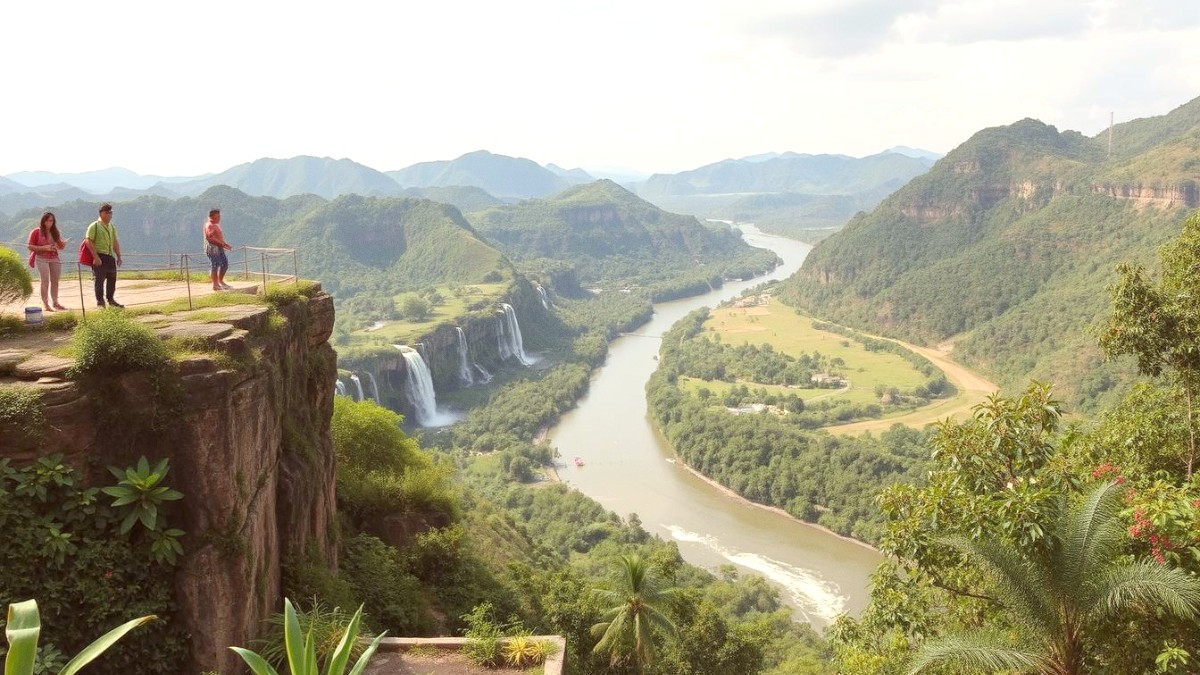
Southern Laos, Laos
Pakse does not have a metro or tram system. Public transportation mainly consists of Songthaews and Local Buses. Songthaews are covered pickup trucks with two benches in the back for passengers. They function as shared taxis or local buses, operating on fixed routes connecting the city center to nearby villages, markets, and sometimes the bus terminals. They also hire privately for longer journeys or day trips. Local buses connect Pakse to surrounding towns and villages within Champasak province. They typically depart from the Southern Bus Terminal. These are generally older vehicles, but they offer a budget-friendly option for regional travel.
No formal, printed route maps are readily available for songthaews. Their routes generally are understood by locals. Tell the driver your destination or show it on a map. The Southern Bus Terminal is a main hub for inter-city and local bus or songthaew connections. The Dao Heuang Market (Pakse Market) is a central point in the city where many local songthaews and tuk-tuks congregate. It is a good place to find a ride to almost anywhere within the city or its immediate surroundings.
Most local transport operates from early morning (6-7 AM) until late evening (8-9 PM). Frequency depends on demand and route.
Public transport options generally are not wheelchair-accessible. Infrastructure for mobility needs is limited.
State your destination clearly. Bargain politely for tuk-tuks. Embrace sharing rides. "Lao time" means patience for schedules.
Self-drive uncommon. Often comes with driver. IDP and local license needed if self-driving. Check insurance.
Most popular rental. LAK 80,000-150,000/day. IDP recommended. Wear helmet. Check bike condition and insurance.
Common, affordable (LAK 20,000-40,000/day). Ideal for city exploration. No formal sharing programs.
Drive on the right. Helmets mandatory for motorcyclists. Zero-tolerance for drunk driving. Be aware of erratic driving.
Pakse's city center, especially along the Sedone and Mekong rivers, is relatively flat and pedestrian-friendly. Many guesthouses, restaurants, and shops are within comfortable walking distance. The riverside promenade presents a pleasant evening stroll. Dao Heuang Market explores best on foot. This allows navigation of narrow aisles, observation of local commerce, and sampling of street food. No formal guided walking tours commonly are available. The city is easy to navigate for self-guided walks.
"Lao time" means transport schedules are sometimes fluid. Be prepared for delays.
For non-metered transport, negotiate the fare politely before you start your journey.
Carry small denominations of Lao Kip for easy payment on local transport.
Drones require special permits in Laos. Flying without permission causes legal issues.
Check regulations before bringing.
Generally easy to find parking for motorbikes and cars. Park on the side of the road or in designated areas.
Always lock your motorbike.
Southern Laos was heavily bombed. UXO remains a hazard in rural, unmanaged areas.
Stick to marked paths, never touch suspicious objects.
Pakse serves as a dynamic hub for exploring southern Laos. Its blend of French colonial heritage, bustling markets, and access to natural wonders presents a rich travel experience.
Embrace the local pace, enjoy the cuisine, and adventure into the surrounding landscapes for an unforgettable journey.